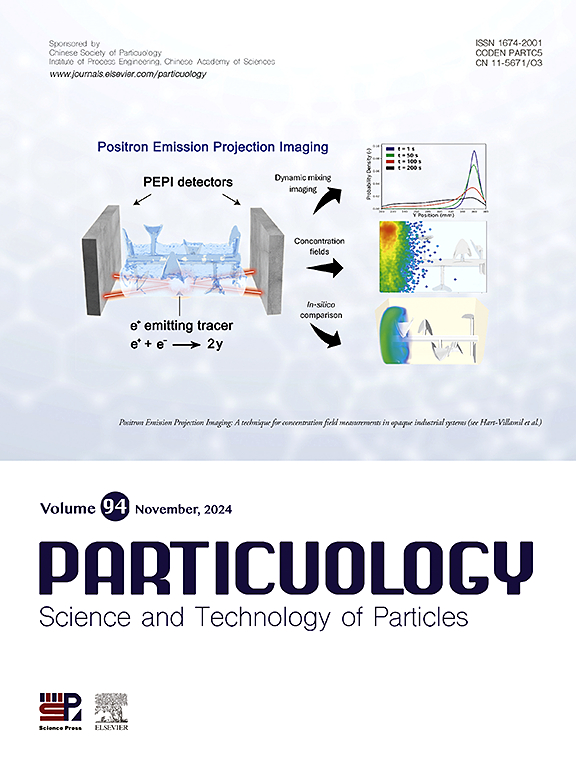Investigating the enzymatic breakdown capability: A comparative study of Aeromonas caviae-derived enzymes in countering the toxicity of phenolic compounds via different approaches
IF 4.3
2区 材料科学
Q2 ENGINEERING, CHEMICAL
引用次数: 0
Abstract
Toxic aromatic compounds are widespread environmental pollutants posing significant ecological and health risks due to their persistence and toxicity. Aeromonas caviae is a promising microbial candidate for biodegradation owing to its diverse enzymatic arsenal. This study investigates the cooperative roles of two key enzymes from A. caviae, beta-ketoadipate enol-lactone hydrolase, which is involved in ring-opening hydrolysis, and muconate cycloisomerase, which catalyzes the isomerization of muconate intermediates, in degrading 15 selected toxic compounds using computational methods. Enzyme stability analysis via ExPASy ProtParam indicated an instability index below 40, confirming structural stability. Homology models were constructed and validated with high-quality scores. Molecular docking revealed Acenocoumarol as the compound with the highest binding affinity (−7.8 kcal/mol). Protein-ligand interaction analysis identified key residues involved in Pi-Pi and hydrogen bonding interactions critical for catalysis. Furthermore, a bioengineered hybrid enzyme model demonstrated improved binding precision and structural similarity to homologous proteins. These findings highlight the potential application of A. caviae enzymes in the bioremediation of toxic pollutants. Future experimental validation and enzyme engineering could further enhance their catalytic efficiency for sustainable environmental detoxification.

研究酶分解能力:鱼穴气单胞菌衍生酶通过不同途径对抗酚类化合物毒性的比较研究
有毒芳香族化合物是广泛存在的环境污染物,由于其持久性和毒性,对生态和健康造成重大危害。由于其多样化的酶库,气单胞菌是一种很有前途的生物降解微生物候选物。本研究利用计算方法研究了A. caviae中两个关键酶,参与开环水解的β -酮己二酸烯醇-内酯水解酶和催化粘膜酸酯中间体异构化的粘膜酸酯环异构酶,在降解15种选定的有毒化合物中的协同作用。通过ExPASy ProtParam进行酶稳定性分析,不稳定性指数低于40,证实结构稳定。构建了同源性模型,并以高质量分数进行了验证。分子对接发现,Acenocoumarol的结合亲和力最高(−7.8 kcal/mol)。蛋白质-配体相互作用分析确定了参与Pi-Pi和氢键相互作用的关键残基,对催化至关重要。此外,生物工程杂交酶模型显示出更高的结合精度和与同源蛋白的结构相似性。这些发现突出了黄颡鱼酶在有毒污染物生物修复中的潜在应用。未来的实验验证和酶工程可以进一步提高它们在可持续环境解毒中的催化效率。
本文章由计算机程序翻译,如有差异,请以英文原文为准。
求助全文
约1分钟内获得全文
求助全文
来源期刊

Particuology
工程技术-材料科学:综合
CiteScore
6.70
自引率
2.90%
发文量
1730
审稿时长
32 days
期刊介绍:
The word ‘particuology’ was coined to parallel the discipline for the science and technology of particles.
Particuology is an interdisciplinary journal that publishes frontier research articles and critical reviews on the discovery, formulation and engineering of particulate materials, processes and systems. It especially welcomes contributions utilising advanced theoretical, modelling and measurement methods to enable the discovery and creation of new particulate materials, and the manufacturing of functional particulate-based products, such as sensors.
Papers are handled by Thematic Editors who oversee contributions from specific subject fields. These fields are classified into: Particle Synthesis and Modification; Particle Characterization and Measurement; Granular Systems and Bulk Solids Technology; Fluidization and Particle-Fluid Systems; Aerosols; and Applications of Particle Technology.
Key topics concerning the creation and processing of particulates include:
-Modelling and simulation of particle formation, collective behaviour of particles and systems for particle production over a broad spectrum of length scales
-Mining of experimental data for particle synthesis and surface properties to facilitate the creation of new materials and processes
-Particle design and preparation including controlled response and sensing functionalities in formation, delivery systems and biological systems, etc.
-Experimental and computational methods for visualization and analysis of particulate system.
These topics are broadly relevant to the production of materials, pharmaceuticals and food, and to the conversion of energy resources to fuels and protection of the environment.
 求助内容:
求助内容: 应助结果提醒方式:
应助结果提醒方式:


